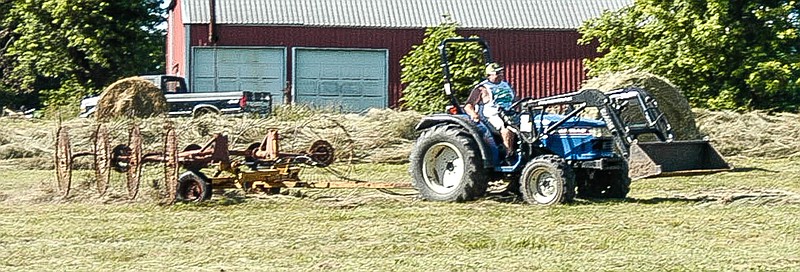For those who think all hay is alike, reports on how well hay production is in any particular year can be confusing.
There are actually many different kinds of grasses and legumes referred to under the single term of "hay." Those different grasses and legumes are affected differently by snow, ice, late frosts, temperatures - and the amount and timing of rainfall.
First, hay can include fescue, sudangrass, red clover, alfalfa, brome, orchardgrass, native grasses and other vegetation. Native grasses include big bluestem, little bluestem, Indiangrass and switchgrass, which are mostly warm-season grasses.
An actual bale of hay often is a mixture.
Second, there are other factors than the type of hay that affects production on a specific field. One of those is fertilizer.
"If you don't put fertilizer on, you're not going to get hay," said Daryl Raithel, Farm Service Agency county executive director in Moniteau County. "The timing of the application depends on what the farmer wants to do with the crop - seed, hay or grazing."
The grasses and grass mixtures, whether grown for hay or pasture, are perennial crops. Because of that, the previous crop is not a consideration when making fertilizer guidelines. Nitrogen fertilizer guidelines are based on expected yield. The expected yield will vary with such factors as intended use, management intensity and soil texture.
This year, the pastures in general look good.
As far as hay is concerned, it's looking good this year, although not as many bales are being harvested as last year.
Fescue hay is good, as is the orchardgrass and the timothy crop. Some of the alfalfa fields are on their third cutting.
It is interesting that this year, there has been some good production of red clover hay. Apparently the weather conditions have been just about right for red clover. Much of the clover hay has been baled from areas where it just grew this year, where none was planted.
Raithel commented previously that clover is good hay, if it can be gotten up at the right time. He then said it's harder than other hay to get up right.

